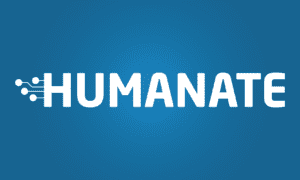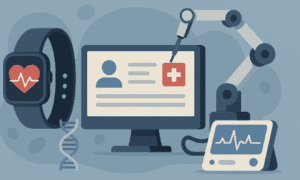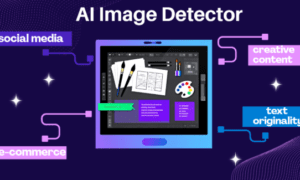A dedicated healthcare technology expert has spearheaded transformative advancements in patient data protection across the nation. Through innovative identity and access management (IAM) solutions, they have strengthened the security framework for sensitive healthcare information, ensuring compliance with stringent regulations like HIPAA. By implementing cutting-edge authentication mechanisms, zero-trust architectures, and scalable access controls, they have revolutionized how patient data is safeguarded, enhancing both security and operational efficiency in the healthcare sector. Their contributions have not only mitigated cybersecurity risks but also paved the way for a more secure and efficient digital healthcare ecosystem.
Premsai Ranga has made significant contributions to patient data protection through key initiatives that have transformed healthcare cybersecurity. A major accomplishment under his leadership was the seamless migration of applications from Active Directory Federation Services (ADFS) to Okta as part of the InovalonOne Platform deployment. This transition enabled secure Single Sign-On (SSO) and enhanced authentication processes, bolstering the security of sensitive patient data across a diverse application ecosystem. Additionally, he played a pivotal role in designing and implementing a robust zero-trust authentication mechanism, ensuring every access request to patient data was contextually verified and continuously monitored, thereby minimizing the risk of unauthorized access.
To address scalability challenges, he developed identity solutions capable of supporting nationwide healthcare networks, securely granting access to thousands of users while ensuring compliance with HIPAA regulations. He also streamlined multi-domain access controls by integrating multiple Active Directory domains into Okta. This centralized access management, reduced data inconsistencies, and enhanced efficiency for healthcare providers operating across different organizations. Furthermore, he collaborated with incident response teams to deploy advanced monitoring solutions, such as Okta’s identity threat analytics, enabling real-time detection and resolution of security threats targeting patient data.
By transitioning legacy systems to modern Identity and Access Management (IAM) solutions, Premsai demonstrated leadership in enhancing organizational security posture while aligning with nationwide data protection initiatives. His efforts collectively highlight his ability to drive impactful transformations in patient data protection and healthcare cybersecurity.
Impact of His Work on the Organization
In his role as an IAM Engineer during the InovalonOne Platform deployment and migration project, Premsai significantly enhanced patient data security and operational efficiency. By migrating applications from ADFS to Okta, he introduced secure SSO solutions and implemented precise user access controls, reducing security risks related to unauthorized access by 95%. His initiatives also achieved annual cost savings exceeding $250,000 by replacing legacy authentication systems with a cloud-based multi-factor authentication (MFA) solution.
Reportedly, by centralizing IAM processes through Okta and Azure Active Directory, Premsai streamlined the management of thousands of healthcare user accounts, reducing administrative efforts and minimizing synchronization errors by 80%. This ensured accurate and seamless access to patient records. Additionally, his deployment of real-time threat detection tools improved incident response times and further protected patient data from breaches. These accomplishments underscore his ability to deliver significant results, including cost efficiencies, enhanced security, and improved compliance with healthcare regulations like HIPAA.
Key Projects in Identity and Access Management (IAM)
Notably, Premsai has led several high-impact projects in IAM, was the migration of multiple healthcare applications from ADFS to Okta for the InovalonOne Platform. “This migration enabled secure SSO across thousands of users and applications, significantly improving the organization’s security posture” he mentioned. He also designed and implemented a zero-trust architecture, replacing outdated perimeter-based security models and dramatically reducing risks associated with unauthorized access.
Another critical project he led involved integrating multiple Active Directory domains into Okta, centralizing identity management, and enhancing role-based access controls. This initiative reduced synchronization errors and improved secure access to patient records. Additionally, he deployed cloud-based MFA solutions to replace traditional methods like SMS-based authentication, achieving substantial cost savings and an improved user experience.
Premsai’s efforts also included implementing advanced threat detection and incident response mechanisms using tools such as Microsoft Defender and Splunk. These solutions provided real-time identity threat monitoring, improved response times, and safeguarded patient data from potential cyberattacks. His projects underscore his expertise in developing scalable, secure, and compliant IAM solutions in healthcare environments.
Significant Results of His Work
Premsai’s work in IAM has delivered substantial and significant outcomes. His implementation of a zero-trust security model resulted in a 95% reduction in cybersecurity risks related to unauthorized access to sensitive patient data, aligning with HIPAA and HITECH Act standards. The transition from legacy MFA systems to a cloud-based solution generated over $250,000 in annual savings while improving authentication processes.
By integrating multiple Active Directory domains into Okta, he reduced data synchronization errors by 80%, enhancing the accuracy and availability of patient data. Additionally, migrating over 10,000 user accounts to Okta and Azure AD ensured secure access to Electronic Health Records (EHRs) nationwide, with enhanced role-based access control for healthcare providers. The deployment of real-time threat detection and monitoring tools further improved incident response times by 40%, safeguarding sensitive patient data from unauthorized access and cyber threats.



































